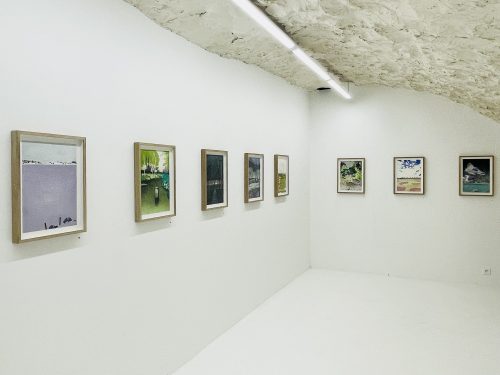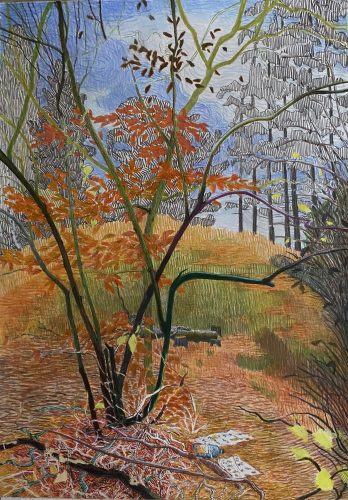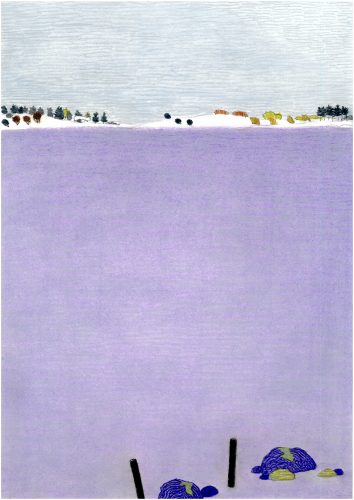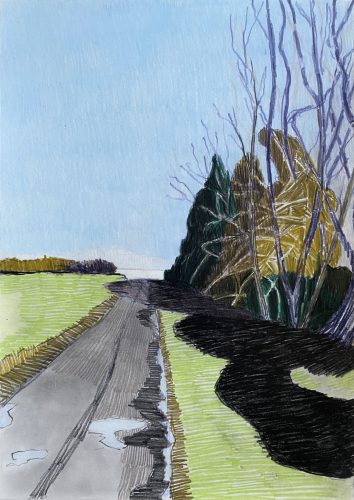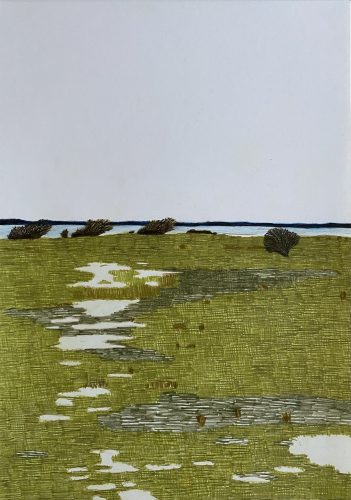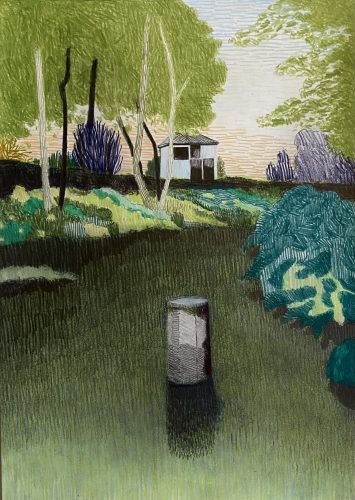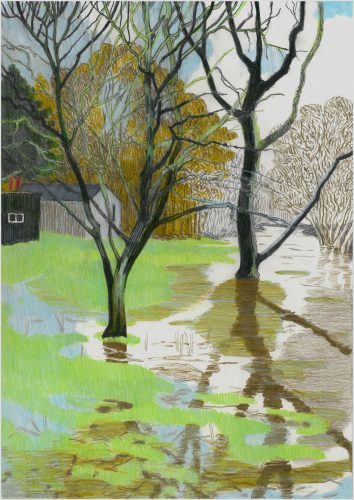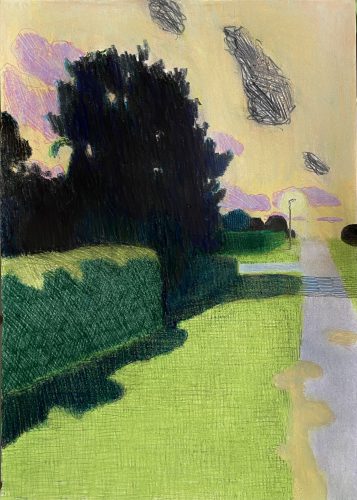The painted landscape is a reflection of the soul. The artist makes its surroundings malleable and exteriorizes his deepest feelings on his canvas.
As Edvard Munch said, “A work of art can only come from the interior of man. Art is the form of the image formed upon the nerves, heart, brain and eye of man.” This haunting and obsessive rendition of the world by the Norwegian master marked deeply Per Adolfsen in his boyhood, who discovered his works in Oslo’s Nasjonalgalleriet.
By understanding the postimpressionists and German expressionists, Adolfsen adopted sinuous lines and anti-naturalists colors to transcribe through sceneries his own temperament, as a corner of the creation seen through his expression. Munch then can be seen in his last works, but also Van Gogh’s charcoal drawings of broken trees or the fugitive stroke from impressionists’ paintings ; we would also have to evoke the French Barbizon School and its erasing of the human figure.
Through Adolfsen’s original points of view and saturated colors, it is even the Nabi landscapes by artists such as Valloton or Serusier that are referred to, whereas the abundant vegetation reminds us of the Douanier Rousseau.
Per Adolfsen uses pencils as if they were brushes : the skies of “Yellow Field” are striped with fine colorful lines where you feel the telluric and mineral texture of pigments. The serpentine shapes adopted in “The Pine Tree and the Hills” to describe the danish countryside are wavy and undulating. The inertia and the weight of boulders and trees in “Evening Langø” shift to an air-like lightness. The rocks in “Stepping Stones” seem to become air bubbles or colored fumes.
In a way remembering us of Japanese etchings, the artists shows us the “images of the floating world”.
In 2011, Per Adolfsen wasn’t hesitant to describe his production as abstract. Though his production has radically changed, Adolfen’s works still have this same essence : patterns build up the artwork like a tapestry, aggregate through colors that he “doesn’t understand as decorations, but as assemblies”. These colors unify into a comprehensible whole and invite the spectator to enter this calm and peaceful universe. To him “the sky, the water, the trees, it is as if all elements are built on the same structure and are all involved in one another. Somehow, I saw my own life in all these movements of nature.”
In 1435, Alberti defined art as « an open window from which you look at history ». The history that Adolfsen delivers is one of a feathery and forgotten nature where humanity slips away to let the woods become silent. His drawings are not to be interpreted as a pure representation but as an opening. “I would want people to realize they are part of this bigger system” he claimed in 2020.
Per Adolfsen wants us to understand the ascendancy of nature on us. “The mineral kingdom has in it nothing amiable and attractive; its riches, enclosed in the bosom of the earth, seem to be hidden from the sight of matt that they may not tempt his avarice, being there as in reserve, to supply one day the place of those true riches that are more within his reach, for which he loses the inclination in proportion as he becomes corrupt.” as Rousseau wrote in the Meditations of the Solitary Walker.
Lucas Poggi Gonzalez



